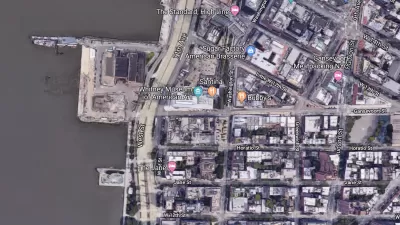Wealthy private donors take the lead in developing New York City projects, such as parks, writes Carol Berens, an architect, author, and real estate agent.
With New York City and other urban communities facing tight budgets these days, private donors are stepping up to spearhead improvement efforts, especially in parks.
One recent example of this is a $170 million proposed public park in the form of a floating island to be part of Hudson River Park designed by and paid for by wealthy, power couple Barry Diller and his wife, fashion designer Diane von Furstenberg.
In New York, the success of private money supporting public functions was demonstrated with the formation of the Central Park Conservancy, a group that raised private funds to turn the fortunes of that New York City landmark around and now is responsible for more than 75 percent of the park’s annual expenses and all of its improvements.
“Throughout America, cities have relinquished responsibility to build and maintain their public spaces, ceding that authority to independent managers and single-purpose organizations. As a result, the bike paths and clean benches in parks that serve the city at large, especially those in wealthier neighbors, are beacons of civic pride while the basketball courts and sliding ponds of many neighborhood parks remain sad indicators of urban neglect.”
While many have raised concerns about private entities taking over publicly-funded projects, city-generated funds for local use are discretionary, forcing a variety of projects to compete for those ever elusive dollars.
FULL STORY: West Side Story

Planetizen Federal Action Tracker
A weekly monitor of how Trump’s orders and actions are impacting planners and planning in America.

San Francisco's School District Spent $105M To Build Affordable Housing for Teachers — And That's Just the Beginning
SFUSD joins a growing list of school districts using their land holdings to address housing affordability challenges faced by their own employees.

The Tiny, Adorable $7,000 Car Turning Japan Onto EVs
The single seat Mibot charges from a regular plug as quickly as an iPad, and is about half the price of an average EV.

As Trump Phases Out FEMA, Is It Time to Flee the Floodplains?
With less federal funding available for disaster relief efforts, the need to relocate at-risk communities is more urgent than ever.

With Protected Lanes, 460% More People Commute by Bike
For those needing more ammo, more data proving what we already knew is here.

In More Metros Than You’d Think, Suburbs are Now More Expensive Than the City
If you're moving to the burbs to save on square footage, data shows you should think again.
Urban Design for Planners 1: Software Tools
This six-course series explores essential urban design concepts using open source software and equips planners with the tools they need to participate fully in the urban design process.
Planning for Universal Design
Learn the tools for implementing Universal Design in planning regulations.
Smith Gee Studio
City of Charlotte
City of Camden Redevelopment Agency
City of Astoria
Transportation Research & Education Center (TREC) at Portland State University
US High Speed Rail Association
City of Camden Redevelopment Agency
Municipality of Princeton (NJ)




























